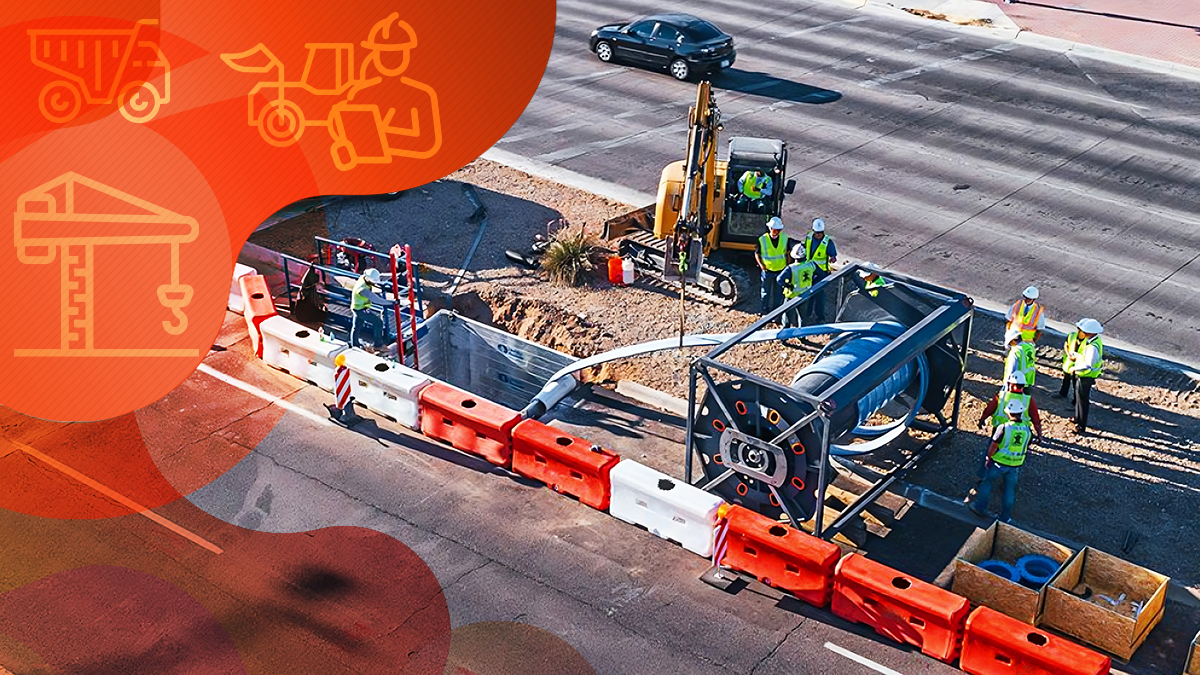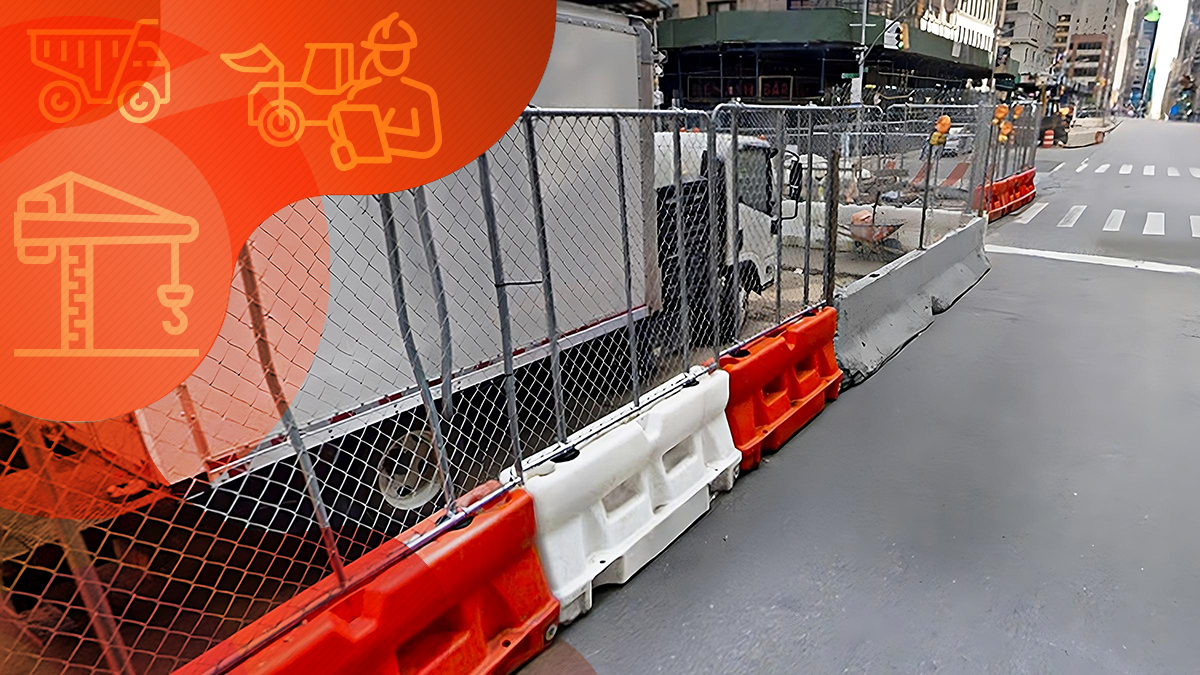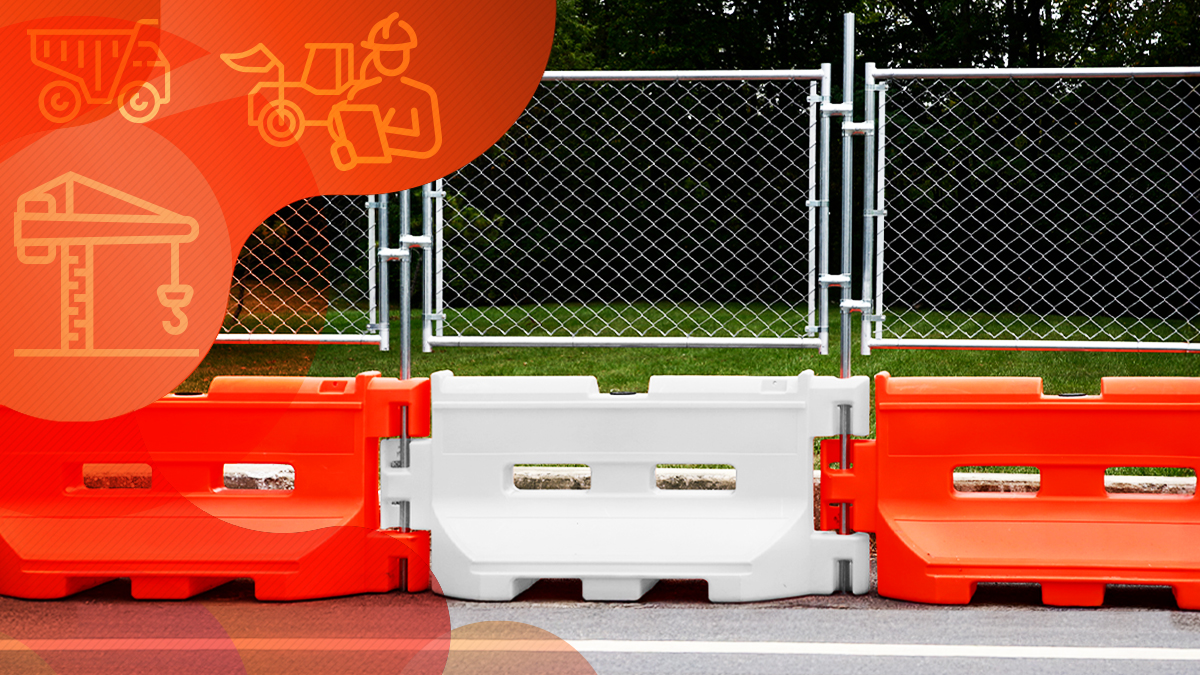The Hidden Cost of Sandbags for Temporary Fences
Discover the true cost of stabilizing temporary fences with sandbags – from labor to disposal – and explore a smarter alternative for long-lasting stability. Say goodbye to wobbly fences and hidden expenses with our guide to cost-effective solutions!

Sandbags are used for flood control, military fortifications, and ballast. They can be used as stabilizers and body-building weights. Their versatility and low cost make them a go-to solution in many situations.
Various military forces have used them as fortifications since the 16th century. Landowners have used them to protect against flooding and to serve as barricades to control livestock. While sandbags have been used effectively in multiple scenarios, they may not be the best solution for stabilizing temporary fences for construction sites.
Using Sandbags as Stabilizers for Construction Fencing
Construction companies use temporary fencing to enclose their building sites. They may use a construction fence to section off part of the site for extra protection. The goal is to prevent unauthorized entry to the site and to minimize the risk to the public. For decades, sandbags have functioned as fence feet weight, to stabilize temporary fencing.
The average sandbag weighing 30 pounds must withstand hours of ultraviolet rays and high winds along the site's perimeter. It may be kicked or stepped on by pedestrians, and some may even be run over by employees as they move equipment on and off a construction site.
Make sure to swap out any damaged sandbags quickly to avoid harm to the temporary fence or the building site. When compromised, these sandbags can make the temporary fence unstable and cause it to fall.
Sandbag Lifespan
Sandbags are usually made from natural fibers such as burlap or jute. Their lifespan depends on the material quality and the exposure to ultraviolet light. The lifespan of a sandbag can range from three to 12 months, depending on the frequency of usage.
Sandbags made from UV-protected polypropylene may last longer. They resist the sun's rays and environmental damage such as rain, snow, or pollution. Sunny locations such as California or Florida experience shorter lifespans because of intense sun and flooding.
Labor Requirements
Filling a sandbag takes two people. One person holds the bag while the other shovels the sand into the open bag.
Before starting, each two-person team should wear protective gear, such as eyewear, gloves, and a mask. The protective equipment keeps sand from being inhaled or irritating eyes. Team members should trade places periodically to avoid muscle strain.
On average, one person can fill 12 sandbags per hour, assuming a continuous supply of materials and minimal work breaks. A two-person team should fill the same number of bags in 30 minutes.


Storage Needs
Filled, unused sandbags should be stored off the ground in a covered and dry location. Good air circulation may be needed in areas with high humidity to prevent mold. Unfilled bags should be stored away from sun and moisture.
Filled used bags should be stored off the ground in a dry, well-ventilated space to prevent mold. They should also be inspected after each use and replaced if they are torn or damaged.
Disposal Requirements
Sand and sandbags can become contaminated, so dumping the sand and tossing the bag may not be environmentally safe. If water mains break or flooding occurs, the sand may need to be placed in the appropriate landfill rather than reused.
If fuel or oil spills onto sandbags, the sand can also become contaminated. Reusing compromised sandbags can result in contaminants leaching into the soil and groundwater.
Transportation Concerns
Most filled sandbags weigh 30 pounds; however, some applications may require sandbag weights of 50 pounds.
The weight and number of filled sandbags determine how they can be shipped. Any vehicle with a gross vehicle weight rating of over 10,000 pounds requires a commercial driver's license. For reference, 333 30-pound sandbags weigh 9,990 pounds.
Sandbags may appear to be the most cost-effective solution to stabilizing a construction fence. However, the expenses that accrue over the sandbag's lifespan can turn an apparent low-cost solution into an expensive alternative to a temporary fence anchor for a construction site.
Uncovering the Hidden Costs of Sandbags
Sandbags may appear to be the cost-effective alternative to stabilizing temporary fencing at a construction site. The cost of the bags ranges from less than US$1 to nearly $5 for a branded sandbag.
Sand prices vary significantly depending on the type of sand and location. Sand costs as little as $36 or as much as $95 per ton (or $146.52 or $386.65, respectively). Delivery charges usually apply.
The Construction Site
Suppose a construction site needs temporary fencing solutions for an 1,800-foot perimeter.
The site is in an area prone to blizzard conditions, so fences must withstand high winds and extreme cold.
The project is expected to last a minimum of 18 months.


The Number of Bags
Two 60- or four 30-pound sandbags should be placed for every 12 feet of temporary fencing.
For an 1,800-foot perimeter, that is 600 30-pound bags. (4 x 150, where 150 is the result of 1800 divided by 12).
Assuming an average per-bag cost of $3.00, 600 sandbags would cost $1,800.00, plus an added 10% for replacement bags. The total cost is $1,900.00.
The Sand
It takes close to two tons of sand to fill 600 30-pound sandbags. At the low end of the price range, the cost would be just under $300.00 or $775.00 at the high end.
The Labor
The 2024 average hourly rate for manual labor in the US is $15.06. If two-person teams are used, the cost is $30.12 per hour. If a team can fill 24 bags per hour, they will need a little over 20 hours to fill 600 bags at a total cost of $602.40, excluding benefits or overhead.
Initial Cost
Depending on the price of sand, the total cost for the initial order of 600 sandbags would be $2,802.40 on the low end and $3,277.40 on the upper end.
That does not include transportation and storage costs. Suddenly, a few dollars for bags and a couple of hundred for sand have become a few thousand—just for an initial set-up.
Recurring Costs
Sandbags, whether made from natural or synthetic materials, degrade when exposed to the elements. UV-protected bags may last longer than their natural counterparts, but all sandbags deteriorate when exposed to multiple wet and dry cycles.
Based on the initial cost calculations, the replacement cost for a single sandbag ranges from $4.99 to $5.45. That includes the bag, sand, and labor but does not include transportation or storage costs.
In our hypothetical scenario, the construction project is expected to last 18 months. Given the average lifespan for natural-fiber sandbags of 12 months, all sandbags would need to be replaced before the project ended.
Replacement bags may be torn or damaged before the project is completed, adding to the cost of the sandbags. Synthetic bags may last through the 18-month project but would need to be replaced within six months as the estimated lifespan is two years.
A Sandbag Alternative
Sandbags are just one of many solutions to stabilize temporary fences. There are other makeshift alternatives, such as using concrete blocks, but these also have their hidden costs for frequent replacements and maintenance.
The best solutions to stabilize temporary fences are the ones that are designed specifically for this purpose because they won't have any hidden costs.
SONCO offers Anchor Weights that are stronger and more resilient than sandbags. They are made from recycled plastic with a minimal footprint for efficient storage. They can withstand winds of up to 110 miles per hour -- the equivalent of an EF1 tornado.
Anchor Bases provide a cleaner look around construction sites and minimize the risk of injury from shifting or misplaced sandbags. These fence anchors feature eye-catching colors, making it easier for people to see them.
To learn everything about the best fence bases for construction zones, click on the image below and download our complete guide to temporary fence bases!


Trend now

Reducing Impact Damage with Water-Filled Plastic Jersey Barriers
Understanding the effects of barrier materials on vehicles and their occupants can help improve road safety.

Choosing Between Concrete or Plastic Jersey Barriers
Not all barriers are built the same. Here’s what to know before choosing between plastic and concrete.

Advantages of Water Barriers with Fence Toppers
Learn how a fence topper transforms water barriers into a more secure, private, and effective work site solution.

